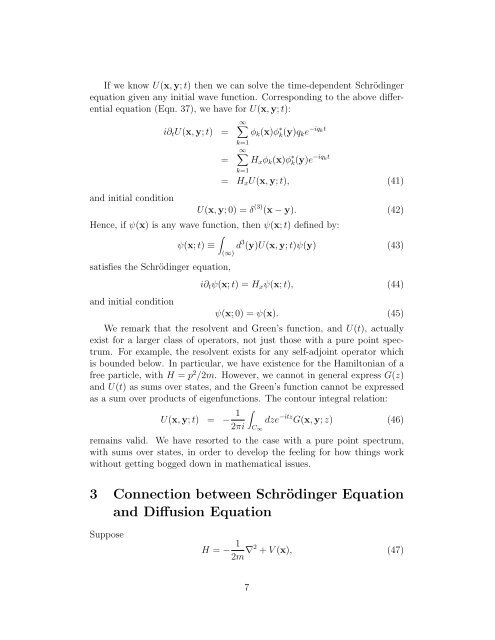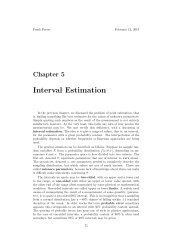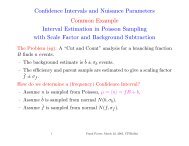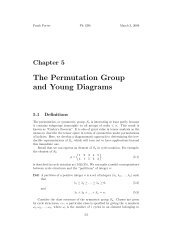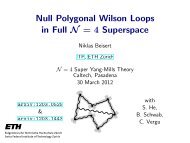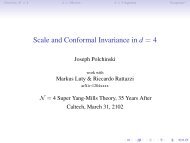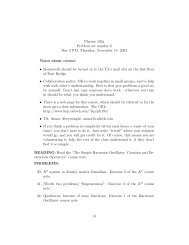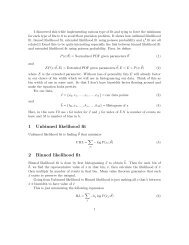1 Introduction 2 Resolvents and Green's Functions
1 Introduction 2 Resolvents and Green's Functions
1 Introduction 2 Resolvents and Green's Functions
Create successful ePaper yourself
Turn your PDF publications into a flip-book with our unique Google optimized e-Paper software.
If we know U(x, y; t) then we can solve the time-dependent Schrödinger<br />
equation given any initial wave function. Corresponding to the above differential<br />
equation (Eqn. 37), we have for U(x, y; t):<br />
<strong>and</strong> initial condition<br />
i∂ t U(x, y; t) =<br />
∞∑<br />
φ k (x)φ ∗ k(y)q k e −iq kt<br />
k=1<br />
=<br />
∞∑<br />
H x φ k (x)φ ∗ k(y)e −iq kt<br />
k=1<br />
= H x U(x, y; t), (41)<br />
U(x, y; 0) = δ (3) (x − y). (42)<br />
Hence, if ψ(x) is any wave function, then ψ(x; t) defined by:<br />
∫<br />
ψ(x; t) ≡ d 3 (y)U(x, y; t)ψ(y) (43)<br />
(∞)<br />
satisfies the Schrödinger equation,<br />
<strong>and</strong> initial condition<br />
i∂ t ψ(x; t) = H x ψ(x; t), (44)<br />
ψ(x; 0) = ψ(x). (45)<br />
We remark that the resolvent <strong>and</strong> Green’s function, <strong>and</strong> U(t), actually<br />
exist for a larger class of operators, not just those with a pure point spectrum.<br />
For example, the resolvent exists for any self-adjoint operator which<br />
is bounded below. In particular, we have existence for the Hamiltonian of a<br />
free particle, with H = p 2 /2m. However, we cannot in general express G(z)<br />
<strong>and</strong> U(t) as sums over states, <strong>and</strong> the Green’s function cannot be expressed<br />
as a sum over products of eigenfunctions. The contour integral relation:<br />
U(x, y; t) = − 1<br />
2πi<br />
∫<br />
C ∞<br />
dze −itz G(x, y; z) (46)<br />
remains valid. We have resorted to the case with a pure point spectrum,<br />
with sums over states, in order to develop the feeling for how things work<br />
without getting bogged down in mathematical issues.<br />
3 Connection between Schrödinger Equation<br />
<strong>and</strong> Diffusion Equation<br />
Suppose<br />
H = − 1<br />
2m ∇2 + V (x), (47)<br />
7


